By Trisha Gee, Java Engineer and Advocate at MongoDB In the last article, we covered the basics of installing and connecting to MongoDB via a Java application. In this post, Ill give an introduction to CRUD (Create, Read, Update, Delete) o
By Trisha Gee, Java Engineer and Advocate at MongoDB
In the last article, we covered the basics of installing and connecting to MongoDB via a Java application. In this post, I’ll give an introduction to CRUD (Create, Read, Update, Delete) operations using the Java driver. As in the previous article, if you want to follow along and code as we go, you can use these tips to get the tests in the Getting Started project to go green.
Creating documents
In the last article, we introduced documents and how to create them from Java and insert them into MongoDB, so I’m not going to repeat that here. But if you want a reminder, or simply want to skip to playing with the code, you can take a look at Exercise3InsertTest.
Querying
Putting stuff in the database is all well and good, but you’ll probably want to query the database to get data from it.
In the last article we covered some basics on using find() to get data from the database. We also showed an example in Exercise4RetrieveTest. But MongoDB supports more than simply getting a single document by ID or getting all the documents in a collection. As I mentioned, you can query by example, building up a query document that looks a similar shape to the one you want.
For the following examples I’m going to assume a document which looks something like this:
<code>person = {
_id: "anId",
name: "A Name",
address: {
street: "Street Address",
city: "City",
phone: "12345"
}
books: [ 27464, 747854, ...]
}
</code>
Find a document by ID
To recap, you can easily get a document back from the database using the unique ID:
…and you get the values out of the document (represented as a DBObject) using a Map-like syntax:
In the above example, because you’ve queried by ID (and you knew that ID existed), you can be sure that the cursor has a single document that matches the query. Therefore you can use cursor.one() to get it.
Find all documents matching some criteria
In the real world, you won’t always know the ID of the document you want. You could be looking for all the people with a particular name, for example.
In this case, you can create a query document that has the criteria you want:
You can find out the number of results:
and you can, naturally, iterate over them:
A note on batching
The cursor will fetch results in batches from the database, so if you run a query that matches a lot of documents, you don’t have to worry that every document is loaded into memory immediately. For most queries, the first batch returned will be 101 documents. But as you iterate over the cursor, the driver will automatically fetch further batches from the server. So you don’t have to worry about managing batching in your application. But you do need to be aware that if you iterate over the whole of the cursor (for example to put it into a List), you will end up fetching all the results and putting them in memory.
You can get started with Exercise5SimpleQueryTest.
Selecting Fields
Generally speaking, you will read entire documents from MongoDB most of the time. However, you can choose to return just the fields that you care about (for example, you might have a large document and not need all the values). You do this by passing a second parameter into the find method that’s another DBObject defining the fields you want to
return. In this example, we’ll search for people called “Smith”, and return only the name field. To do this we pass in a DBObject representing {name: 1}:
You can also use this method to exclude fields from the results. Maybe we might want to exclude an unnecessary subdocument
from the results - let’s say we want to find everyone called “Smith”, but we don’t want to return the address. We do this by
passing in a zero for this field name, i.e. {address: 0}:
With this information, you’re ready to tackle Exercise6SelectFieldsTest
Query Operators
As I mentioned in the previous article, your fields can be one of a number of types, including numeric. This means that you can do queries for numeric values as well. Let’s assume, for example, that our person has a numberOfOrders field, and we wanted to find everyone who had ordered more than, let’s say, 10 items. You can do this using the
$gt operator:
Note that you have to create a further subdocument containing the $gt condition to use this operator. All of the query operators are
documented, and work in a similar way to this example.
You might be wondering what terrible things could happen if you try to perform some sort of numeric comparison on a field that is a String, since the database supports any type of value in any of the fields (and in Java the values are Objects so you don’t get the benefit of type safety). So, what happens if you do this?
The answer is you get zero results (assuming all your documents contain names that are Strings), and you don’t get any errors. The flexible nature of the document schema allows you to mix and match types and query without error.
You can use this technique to get the test in Exercise7QueryOperatorsTest to go green - it’s a bit of a daft example, but you get the idea.
Querying Subdocuments
So far we’ve assumed that we only want to query values in our top-level fields. However, we might want to query for values in a subdocument - for example, with our person document, we might want to find everyone who lives in the same city. We can use dot notation like this:
We’re not going to use this technique in a query test, but we will use it later when we’re doing updates.
Familiar methods
I mentioned earlier that you can iterate over a cursor, and that the driver will fetch results in batches. However, you can also use the familiar-looking skip() and limit() methods. You can use these to fix up the test in Exercise8SkipAndLimitTest.
A last note on querying: Indexes
Like a traditional database, you can add indexes onto the database to improve the speed of regular queries. There’s extensive
documentation on indexes which you can read at your own leisure. However, it is worth pointing out that, if necessary, you can programmatically create indexes via the Java driver, using createIndexes. For example:
There is a very simple example for creating an index in Exercise9IndexTest, but indexes are a full topic on their own, and the purpose of this part of the tutorial is to merely make you aware of their existence rather than provide a comprehensive tutorial on their purpose and uses.
Updating values
Now you can insert into and read from the database. But your data is probably not static, especially as one of the benefits of MongoDB is a flexible schema that can evolve with your needs over time.
In order to update values in the database, you’ll have to define the query criteria that states which document(s) you want to update, and you’ll have to pass in the document that represents the updates you want to make.
There are a few things to be aware of when you’re updating documents in MongoDB, once you understand these it’s as simple as everything else we’ve seen so far.
Firstly, by default only the first document that matches the query criteria is updated.
Secondly, if you pass in a document as the value to update to, this new document will replace the whole existing document. If you think about it, the common use-case will be: you retrieve something from the database; you modify it based on some criteria from your application or the user; then you save the updated document to the database.
I’ll show the various types of updates (and point you to the code in the test class) to walk you through these different cases.
Simple Update: Find a document and replace it with an updated one
We’ll carry on using our simple Person document for our examples. Let’s assume we’ve got a document in our database that looks like:
<code>person = {
_id: "jo",
name: "Jo Bloggs",
address: {
street: "123 Fake St",
city: "Faketon",
phone: "5559991234"
}
books: [ 27464, 747854, ...]
}
</code>
Maybe Jo goes into witness protection and needs to change his/her name. Assuming we’ve got jo populated in a DBObject, we can make the appropriate changes to the document and save it into the database:
You can make a start with Exercise10UpdateByReplacementTest.
Update Operators: Change a field
But sometimes you won’t have the whole document to replace the old one, sometimes you just want to update a single field in whichever document matched your criteria.
Let’s imagine that we only want to change Jo’s phone number, and we don’t have a DBObject with all of Jo’s details but we do have the ID of the document. If we use the $set operator,
we’ll replace only the field we want to change:
There are a number of other operators for performing updates on documents, for example $inc which will increment a numeric field by a given amount.
Now you can do Exercise11UpdateAFieldTest
Update Multiple
As I mentioned earlier, by default the update operation updates the first document it finds and no more. You can, however, set the multi flag on update to update everything.
So maybe we want to update everyone in the database to have a country field, and for now we’re going to assume all the current people are in the UK:
The query parameter is an empty document which finds everything; the second boolean (set to true) is the flag that says to update all the values which were found.
Now we’ve learnt enough to complete the two tests in Exercise12UpdateMultipleDocumentsTest
Upsert
Finally, the last thing to mention when updating documents is Upsert (Update-or-Insert). This will search for a document matching the criteria and either: update it if it’s there; or insert it into the database if it wasn’t.
Like “update multiple”, you define an upsert operation with a magic boolean. It shouldn’t come as a surprise to find it’s the first boolean param in the update statement (since “multi” was the second):
Now you know everything you need to complete the test in Exercise13UpsertTest
Removing from the database
Finally the D in CRUD - Delete. The syntax of a remove should look familiar now we’ve got this far, you pass a document that represents your selection criteria into the remove method. So if we wanted to delete jo from our database, we’d do:
Unlike update, if the query matches more than one document, all those documents will be deleted (something to be aware of!). If we wanted to remove everyone who lives in London, we’d need to do:
That’s all there is to remove, you’re ready to finish off Exercise14RemoveTest
Conclusion
Unlike traditional databases, you don’t create SQL queries in MongoDB to perform CRUD operations. Instead, operations are done by constructing documents both to query the database, and to define the operations to perform.
While we’ve covered what the basics look like in Java, there’s loads more documentation on all the core concepts in the MongoDB documentation:
- Query Documents
- CRUD Operations
- Indexes
原文地址:Getting Started with MongoDB and Java: Part II, 感谢原作者分享。
 mongodb php 扩展没有怎么办Nov 06, 2022 am 09:10 AM
mongodb php 扩展没有怎么办Nov 06, 2022 am 09:10 AMmongodb php扩展没有的解决办法:1、在linux中执行“$ sudo pecl install mongo”命令来安装MongoDB的PHP扩展驱动;2、在window中,下载php mongodb驱动二进制包,然后在“php.ini”文件中配置“extension=php_mongo.dll”即可。
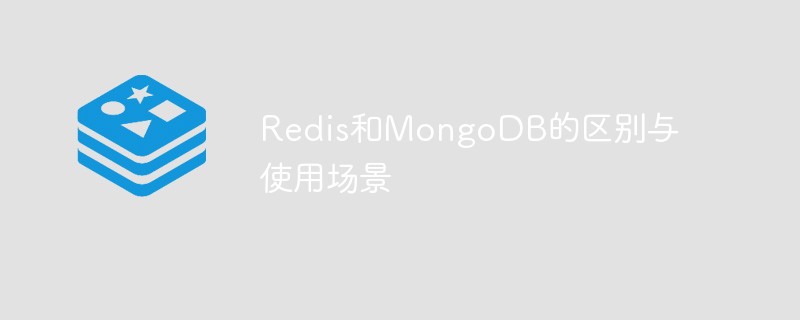 Redis和MongoDB的区别与使用场景May 11, 2023 am 08:22 AM
Redis和MongoDB的区别与使用场景May 11, 2023 am 08:22 AMRedis和MongoDB都是流行的开源NoSQL数据库,但它们的设计理念和使用场景有所不同。本文将重点介绍Redis和MongoDB的区别和使用场景。Redis和MongoDB简介Redis是一个高性能的数据存储系统,常被用作缓存和消息中间件。Redis以内存为主要存储介质,但它也支持将数据持久化到磁盘上。Redis是一款键值数据库,它支持多种数据结构(例
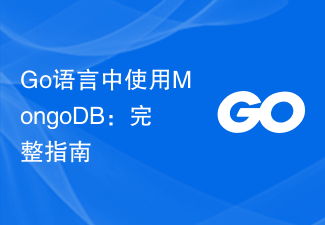 Go语言中使用MongoDB:完整指南Jun 17, 2023 pm 06:14 PM
Go语言中使用MongoDB:完整指南Jun 17, 2023 pm 06:14 PMMongoDB是一种高性能、开源、文档型的NoSQL数据库,被广泛应用于Web应用、大数据以及云计算领域。而Go语言则是一种快速、开发效率高、代码可维护性强的编程语言。本文将为您完整介绍如何在Go语言中使用MongoDB。一、安装MongoDB在使用MongoDB之前,需要先在您的系统中安装MongoDB。在Linux系统下,可以通过如下命令安装:sudo
 php7.0怎么安装mongo扩展Nov 21, 2022 am 10:25 AM
php7.0怎么安装mongo扩展Nov 21, 2022 am 10:25 AMphp7.0安装mongo扩展的方法:1、创建mongodb用户组和用户;2、下载mongodb源码包,并将源码包放到“/usr/local/src/”目录下;3、进入“src/”目录;4、解压源码包;5、创建mongodb文件目录;6、将文件复制到“mongodb/”目录;7、创建mongodb配置文件并修改配置即可。
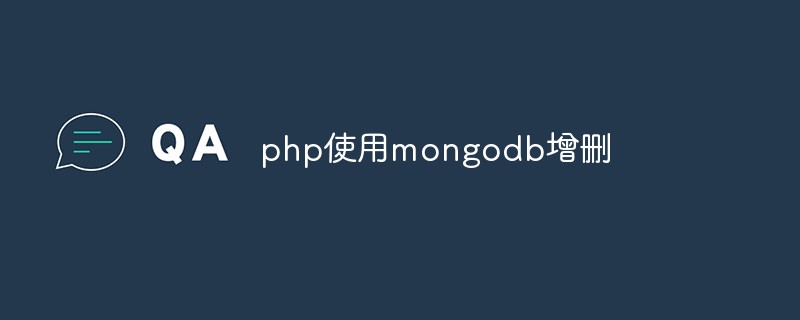 php怎么使用mongodb进行增删查改操作Mar 28, 2023 pm 03:00 PM
php怎么使用mongodb进行增删查改操作Mar 28, 2023 pm 03:00 PMMongoDB作为一款流行的NoSQL数据库,已经被广泛应用于各种大型Web应用和企业级应用中。而PHP语言也作为一种流行的Web编程语言,与MongoDB的结合也变得越来越重要。在本文中,我们将会学习如何使用PHP语言操作MongoDB数据库进行增删查改的操作。
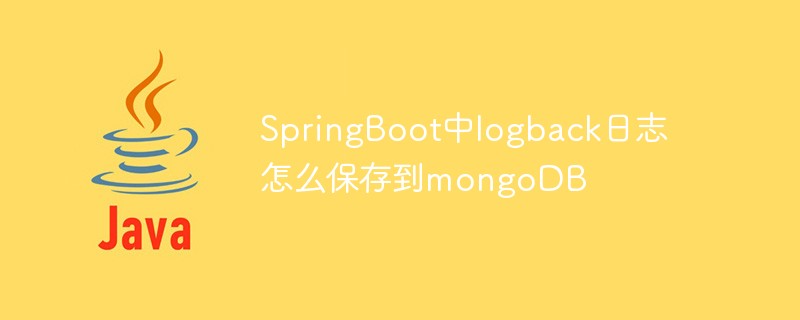 SpringBoot中logback日志怎么保存到mongoDBMay 18, 2023 pm 07:01 PM
SpringBoot中logback日志怎么保存到mongoDBMay 18, 2023 pm 07:01 PM自定义Appender非常简单,继承一下AppenderBase类即可。可以看到有个AppenderBase,有个UnsynchronizedAppenderBase,还有个AsyncAppenderBase继承了UnsynchronizedAppenderBase。从名字就能看出来区别,异步的、普通的、不加锁的。我们定义一个MongoDBAppender继承UnsynchronizedAppenderBasepublicclassMongoDBAppenderextendsUnsynchron
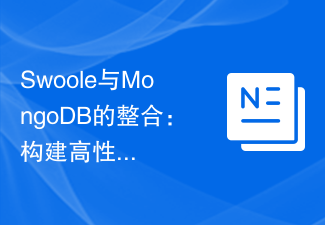 Swoole与MongoDB的整合:构建高性能的文档数据库系统Jun 14, 2023 am 11:51 AM
Swoole与MongoDB的整合:构建高性能的文档数据库系统Jun 14, 2023 am 11:51 AM在现代企业应用程序开发中,需要处理海量数据和高并发的访问请求。为了满足这些需求,开发人员需要使用高性能的数据库系统,以确保系统的稳定性和可扩展性。本文将介绍如何使用Swoole和MongoDB构建高性能的文档数据库系统。Swoole是一个基于PHP语言开发的异步网络通信框架,它能够大大提高PHP应用程序的性能和并发能力。MongoDB是一种流行的文档数据库,
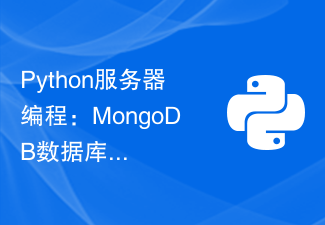 Python服务器编程:MongoDB数据库使用攻略Jun 18, 2023 am 10:25 AM
Python服务器编程:MongoDB数据库使用攻略Jun 18, 2023 am 10:25 AMPython服务器编程:MongoDB数据库使用攻略MongoDB是一种NoSQL数据库,相比传统的关系型数据库,在某些场景下具有明显的优势。本文将介绍如何在Python服务器端使用MongoDB数据库,包括安装、连接、基本操作和查询优化等方面。一、安装MongoDB数据库MongoDB官网提供了各种操作系统下的安装包,这里我们选择在Ubuntu上安装。打开


热AI工具

Undresser.AI Undress
人工智能驱动的应用程序,用于创建逼真的裸体照片

AI Clothes Remover
用于从照片中去除衣服的在线人工智能工具。

Undress AI Tool
免费脱衣服图片

Clothoff.io
AI脱衣机

AI Hentai Generator
免费生成ai无尽的。

热门文章

热工具

MinGW - 适用于 Windows 的极简 GNU
这个项目正在迁移到osdn.net/projects/mingw的过程中,你可以继续在那里关注我们。MinGW:GNU编译器集合(GCC)的本地Windows移植版本,可自由分发的导入库和用于构建本地Windows应用程序的头文件;包括对MSVC运行时的扩展,以支持C99功能。MinGW的所有软件都可以在64位Windows平台上运行。

安全考试浏览器
Safe Exam Browser是一个安全的浏览器环境,用于安全地进行在线考试。该软件将任何计算机变成一个安全的工作站。它控制对任何实用工具的访问,并防止学生使用未经授权的资源。

适用于 Eclipse 的 SAP NetWeaver 服务器适配器
将Eclipse与SAP NetWeaver应用服务器集成。

SublimeText3 英文版
推荐:为Win版本,支持代码提示!

mPDF
mPDF是一个PHP库,可以从UTF-8编码的HTML生成PDF文件。原作者Ian Back编写mPDF以从他的网站上“即时”输出PDF文件,并处理不同的语言。与原始脚本如HTML2FPDF相比,它的速度较慢,并且在使用Unicode字体时生成的文件较大,但支持CSS样式等,并进行了大量增强。支持几乎所有语言,包括RTL(阿拉伯语和希伯来语)和CJK(中日韩)。支持嵌套的块级元素(如P、DIV),






